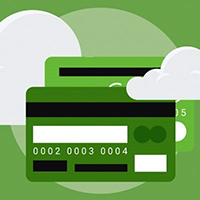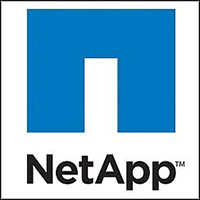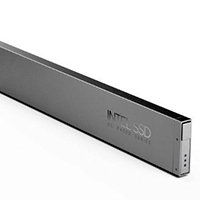In This Issue
- Cybersecurity Spend
- Verizon Cloud Security
- Telefonica & Movistar
- Report from the CEO
- Weak Cybersecurity
- Employees Big Threat
- Cybersecurity Culture
- Understand the Cloud
- Think Beyond Cloud
- MSP Architectures
- Verizon Extends Link
- NetApp Better Trends
- Intel Storage Design
- Move to Cloud Career
- Architecture for Car
- Eliminate Blind Spots
- Coming DCIA Events
Cybersecurity Spend to Surpass $86 Billion
Excerpted from Gartner Press Announcement
 Worldwide spending on information security products and services will reach $86.4 billion in 2017, an increase of 7 percent over 2016, with spending expected to grow to $93 billion in 2018, according to the latest forecast from Gartner.
Worldwide spending on information security products and services will reach $86.4 billion in 2017, an increase of 7 percent over 2016, with spending expected to grow to $93 billion in 2018, according to the latest forecast from Gartner.
Within the infrastructure protection segment, Gartner forecasts fast growth in the security testing market (albeit from a small base) due to continued data breaches and growing demands for application security testing as part of DevOps.
Spending on emerging application security testing tools, particularly interactive application security testing (IAST), will contribute to the growth of this segment through 2021.
Security services will continue to be the fastest growing segment, especially IT outsourcing, consulting and implementation services.
However, hardware support services will see growth slowing, due to the adoption of virtual appliances, public cloud and software as a service (SaaS) editions of security solutions, which reduces the need for attached hardware support overall… Read More
Verizon Ramps-Up Cloud Security
Excerpted from FierceTelecom Report by Sean Buckley
 Verizon is giving its enterprise customers another option to ensure cloud security by adding Check Point’s software to its growing Virtual Network Services suite.
Verizon is giving its enterprise customers another option to ensure cloud security by adding Check Point’s software to its growing Virtual Network Services suite.
Security has been an increasingly important element of Verizon’s virtual service line.
Check Point Software is the latest in a list of enterprise security companies to embed their security offering within Verizon Virtual Network Services, joining Palo Alto, Fortinet, Juniper and Cisco.
Adding Check Point is part of a broader effort by Verizon to create a software-defined technology ecosystem, easing the process for global enterprises to deploy and manage virtual networks that require flexible bandwidth and security.
Verizon Virtual Network Services – Security with Check Point extends threat prevention security across the virtual network and provides added visibility into virtual traffic to help protect against even the most sophisticated cyberattacks.
The service can protect traffic, assets, data and workloads hosted in corporate data centers, customer locations or virtually in the cloud, protecting traffic both inside and outside the enterprise perimeter… Read More
Telefonica Mexico Revamps Movistar On
Excerpted from Telefonica Press Announcement
 One of Mexico’s largest mobile operators, Telefonica Mexico, and the leading Digital Experience cloud solution provider, ItsOn, today announced the launch of a new fully digital renovated experience in Mexico under the Movistar On brand.
One of Mexico’s largest mobile operators, Telefonica Mexico, and the leading Digital Experience cloud solution provider, ItsOn, today announced the launch of a new fully digital renovated experience in Mexico under the Movistar On brand.
The enhanced on-device experience enables Movistar On users to customize their service with bundled plans, OTT subscriptions and Value Added Services that better suit their individual needs.
In the first and half months since its July launch, the new Movistar On service has attracted over seven hundred thousand new customers and is continuing to grow daily.
Existing or new Movistar customers with any Android or iOS device can download, install and then onboard to the Movistar On experience.
As an introductory offer, customers that download the app receive 1GB of complimentary data.
Movistar On customers can purchase new digital services in 1 click from their mobiles, and get real-time views into active plans, current usage and account balance… Read More
Report from DCIA CEO Marty Lafferty

The Federal Communications Commission (FCC) is now accepting comments from industry stakeholders regarding various technical solutions as well as network capabilities to assure Voice-over-Internet Protocol (VoIP) integrity.
The DCIA supports the work of industry standards bodies in developing a framework to mitigate unlawful use of VoIP technologies, such as scam robocalls.
Verification of caller identities (IDs) and VoIP call authentication represent critical steps that will help foster commercial advancement of internet-based services with ramifications in related areas including high-value content distribution.
Two approaches in particular stand-out: Signature-based Handling of Asserted Information Using toKENs (SHAKEN) and Secure Telephone Identity Revisited (STIR).
These protocols enable the identification not only of legitimate traffic, but also of the sources of illegal and untrustworthy communications.
To date, SHAKEN and STIR have been deployed in Canada and the UK.
In addition, traceback and other authentication solutions under development by the Internet Engineering Task Force (IETF) and Session Initiation Protocol (SIP) Forum show great promise and should receive encouragement from the FCC.
For any of these approaches to be effective, however, global participation among responsible actors throughout the internet ecosystem – broadband network operators, software solutions providers, and equipment manufacturers – is required in adopting a set of solutions that are sufficiently flexible to stay ahead of abusers who continually seek workarounds.
No one country, territory, or jurisdiction on its own can effectuate VoIP integrity given the global reach of the internet.
Parties seeking to realize the commercial potential of VoIP implementations need to recognize that bad actors will not stand still.
Share wisely, and take care.
Weak Cybersecurity Puts Nation at Risk
Excerpted from The Hill Report by Sandy Clark
 As serious as Kim Jong Un’s threats are to attack Guam, Alaska, or Hawaii with nuclear ballistic missiles, it’s likely that any future conflict will begin, and possibly end, with non-kinetic but no less crippling cyber warfare.
As serious as Kim Jong Un’s threats are to attack Guam, Alaska, or Hawaii with nuclear ballistic missiles, it’s likely that any future conflict will begin, and possibly end, with non-kinetic but no less crippling cyber warfare.
This kind of warfare encompasses the assault on the electronic “connective tissue” of modern society by interfering with the critical data and electronic signals that control and influence every facet of modern life.
Americans may understand that cyber threats exist, defining the dangers in terms of loss of credit card information, personal information like addresses, phone numbers, social security numbers, bank account information and even private health information.
Fifteen million Americans will have their identities stolen this year.
And by some estimates, cybercrime will cost American businesses $8 trillion over the next five years.
Appalling? Yes. Life threatening? Maybe not.
More serious but less publicized is the loss of very sensitive proprietary information like China’s theft of Lockheed Martin’s F-35 stealth fighter jet.
At least two of China’s modern fighter aircraft, the J-31 and J-20, are built off of stolen F-35 designs.
The 2016 presidential campaign saw the hacking of 33,000 of Hillary Clinton’s emails, many containing classified information… Read More
Employees Biggest Threat to Cybersecurity
Excerpted from TechRepublic Report by Alison DeNisco
 The government sector lags behind others in implementing modern cybersecurity defenses, according to a new report from security firm Netwrix.
The government sector lags behind others in implementing modern cybersecurity defenses, according to a new report from security firm Netwrix.
This failure to update has led to an increase in breaches: 72% of government entities worldwide had their security compromised in 2016, the report found.
And only 14% of government organizations consider themselves to be well-protected against cyber threats.
Government agencies are targeted by hackers due to the sensitive information they store, including citizens’ data (such as addresses, driver’s license numbers, Social Security numbers, financial data, and healthcare records).
They also house information critical to local or national security. Other hackers are interested in gaining access to important infrastructure to damage control systems or disrupt public services, the report noted.
However, the main threat is less nefarious than you may expect: Employees.
A whopping 100% of IT specialists working for government agencies worldwide said employees as the biggest threat to security… Read More
Keys to Strengthen Cybersecurity Culture
Excerpted from GovTech Report by Dan Lohrmann
 While running on my treadmill on Thursday morning, August 17th, I was watching CNBC’s Squawk Box, as David Novak, Co-Founder and former CEO of YUM Brands, came on the show as a guest.
While running on my treadmill on Thursday morning, August 17th, I was watching CNBC’s Squawk Box, as David Novak, Co-Founder and former CEO of YUM Brands, came on the show as a guest.
He was asked how he was so successful at growing such a powerful set of global YUM Brands with great results including names like Pizza Hut, Taco Bell, Burger King and others.
His answer made me slow the treadmill to a walk and listen closely.
He said several things, but his clear messages focused on building a great culture with a set of core values and staff recognition.
Here’s what stood out to me (paraphrased):
Success is all about the culture.
Great leaders know your core values and are true to them.
What messages are you sending to your employees… Read More
2017: The Year to Understand Cloud Computing
Excerpted from Report by Due.com Report by Eric Rosenberg
 “The Cloud” has become a major buzzword in business for very good reason.
“The Cloud” has become a major buzzword in business for very good reason.
Small businesses and large enterprises alike can take advantage of cloud computing to build and expand the computer based infrastructure behind the scenes.
Follow this guide to better understand what cloud computing is, how it works, and how you can take advantage.
The cloud is more reliable than traditional servers.
In the old world of web servers and internet infrastructure, websites and other online assets were typically limited to one main server, or a few linked servers using tools called load balancers, to process and send data, whether it be a customer facing website or internal facing application.
The advent of content delivery networks (CDNs) powered up those servers to host and serve data from the edge of the network for faster serving and sometimes lower costs.
As computing demand exploded with the rise of the smartphone and high-speed internet, consumer and business needs downstream of those servers continued to creep upward… Read More
Time to Think Beyond Cloud Computing
Excerpted from Wired Report by Jeremy Hsu
 Fasten your harnesses, because the era of cloud computing’s giant data centers is about to be rear-ended by the age of self-driving cars.
Fasten your harnesses, because the era of cloud computing’s giant data centers is about to be rear-ended by the age of self-driving cars.
Here’s the problem: When a self-driving car has to make snap decisions, it needs answers fast.
Even slight delays in updating road and weather conditions could mean longer travel times or dangerous errors.
But those smart vehicles of the near-future don’t quite have the huge computing power to process the data necessary to avoid collisions, chat with nearby vehicles about optimizing traffic flow, and find the best routes that avoid gridlocked or washed-out roads.
The logical source of that power lies in the massive server farms where hundreds of thousands of processors can churn out solutions.
But that won’t work if the vehicles have to wait the 100 milliseconds or so it usually takes for information to travel each way to and from distant data centers. Cars, after all, move fast.
That problem from the frontier of technology is why many tech leaders foresee the need for a new “edge computing” network… Read More
Multi-Cloud Computing Architectures
Excerpted from MSPmentor Report by Christopher Tozzi
 A multi-cloud strategy helps managed services providers (MSPs) by increasing service availability, protecting against DDoS, giving customers choice and making data management flexible.
A multi-cloud strategy helps managed services providers (MSPs) by increasing service availability, protecting against DDoS, giving customers choice and making data management flexible.
Multi-cloud computing architectures are the next step up from cloud computing.
If you’re an MSP, it may no longer be enough to have just one cloud.
Here’s why a multi-cloud strategy can helped MSPs.
As the term implies, multi-cloud computing refers to the use of more than one cloud.
A multi-cloud architecture could involve multiple public clouds — such as AWS, Azure and Google Cloud Platform.
Multi-cloud could also take the form of a mixture of different types of clouds — a public cloud, a private cloud and a managed cloud, for example.
In the latter sense, there is some overlap between multi-cloud architectures and hybrid architectures, which mix public and private clouds together… Read More
Verizon Extends Virtual Networking Link to AWS
Excerpted from Light Reading Report
 As enterprises and government agencies increasingly deploy cloud-based solutions, they look for performance and security in their cloud-based applications.
As enterprises and government agencies increasingly deploy cloud-based solutions, they look for performance and security in their cloud-based applications.
With Verizon’s Virtual Network Services (VNS) on the Amazon Web Services (AWS) cloud, customers get the end-to-end visibility and the control needed to effectively manage mobile-to-cloud transactions.
Verizon’s VNS service on AWS complements Verizon’s vision and investment in the software-defined networking (SDN) and network functions virtualization (NFV) ecosystem by helping to enable global enterprise customers to securely connect, deploy and manage virtual networks.
Available immediately, this offering is designed to provide AWS users with services to help control network and security policy, using SDN-based technology, from the enterprise edge directly into their Amazon Virtual Private Cloud (Amazon VPC) instance.
“With this enhancement, Verizon will help enterprise and government organizations to confidently implement mission critical solutions in the cloud,” said Shawn Hakl, Vice President of Networking and Innovation, Verizon… Read More
NetApp Has Better Storage Trends
Excerpted from Barron’s Report by Tiernan Ray
 Chokshi raises his price target to $56 from $46 for NetApp, writing that it can achieve a 25% operating profit margin, in five years from now, up from 17% at the moment.
Chokshi raises his price target to $56 from $46 for NetApp, writing that it can achieve a 25% operating profit margin, in five years from now, up from 17% at the moment.
Its newer products for cloud, writes Chokshi, are giving NetApp newfound “differentiation.”
NetApp has developed a portfolio of hybrid cloud data management products that include NetApp Private Storage (released in late 2012), ONTAP Cloud (launched in late 2014), Altavault (acquired from FFIV in 2015), CloudSync and Cloud Control (both released in late 2016).
These products form an effective complete hybrid cloud data management capability that spans mission critical workload bursting from a private to a public cloud (NPS) to the more basic disaster recovery (AltaVault) capability.
On our annual Silicon Valley bus tour, CEO George Kurian reiterated from the Analyst Day that the company has 1,500 hybrid cloud customers (we estimate out of ~60K customers) that are utilizing NetApp Private Storage (NPS) and thousands of customers that are utilizing one of NetApp’s hybrid cloud products with the customer base growing triple digits… Read More
Intel’s New Data Center Storage Design
Excerpted from CloudTech Report by James Bourne
 It is not quite available yet – but Intel has shed some light on its plans in the data center storage space with the announcement of a new form factor which could enable up to one petabyte of storage in a 1U rack unit.
It is not quite available yet – but Intel has shed some light on its plans in the data center storage space with the announcement of a new form factor which could enable up to one petabyte of storage in a 1U rack unit.
The new ‘ruler’ form factor, named as such for self-evident reasons, “shifts storage from the legacy 2.5 inch and 3.5 inch form factors that follow traditional hard disk drives” and “delivers on the promise of non-volatile storage technologies to eliminate constraints on shape and size,” in Intel’s words.
The company adds that the product will come to market ‘in the near future.’
1U rackmounts are predominantly 19″ wide and 1.75″ high, although the depth can vary from 17.7″ to 21.5.”
As the numbers go up, the height essentially doubles, so a 5U mount can be 19.1″ by 8.75″ by 26.4″, while 7U, the highest, is 17″ by 12.2″ by 19.8.”
To put one petabyte into perspective, it is enough storage to hold 300,000 HD movies.
Intel also had room for a couple more announcements… Read More
Move to a Cloud Career from Traditional IT
Excerpted from InfoWorld Report by David Linthicum
 There is a great deal of interest from those with traditional IT skills – such as enterprise architects, developers, and networking engineers – to steer themselves into a cloud computing career that will not only provide job protection, but pay better as well.
There is a great deal of interest from those with traditional IT skills – such as enterprise architects, developers, and networking engineers – to steer themselves into a cloud computing career that will not only provide job protection, but pay better as well.
However, the path to cloud computing riches is not that clear for most.
The good news: There is a path for many IT pros into the cloud.
This article shows you how to map a path to those jobs from your current state if you are an enterprise architect, database admin, application developer, system admin, test-and-acceptance engineer, or networking engineer.
As an example, the role of an enterprise architect is pretty general in terms of technology and platforms, but companies hiring in anticipation of moving to the cloud are looking for more specific skills.
But look at the career map in the figure below.
There are two very good paths to follow: public cloud solutions architect and cloud security architect… Read More
Computing Architecture for Autonomous Car
Excerpted from Design News Report by Charles Murray
 As the autonomous car evolves, automakers face a complex question: How to enable self-driving cars to process massive amounts of data and then come to logical and safe conclusions about it.
As the autonomous car evolves, automakers face a complex question: How to enable self-driving cars to process massive amounts of data and then come to logical and safe conclusions about it.
Today, most automakers accomplish that with a distributed form of data processing.
That is, they place intelligence at the sensors. More recently, though, that’s begun to change.
Many engineers now favor a more centralized form of data processing, in which simple sensors send raw unprocessed data to a powerful central processor, which does all the “thinking.”
To learn more about distributed and centralized architectures, Design News talked with Davide Santo, an engineering veteran of Motorola and Freescale Semiconductor, and now the Director of the Autonomous Driving Lab for NXP Semiconductors.
Here, Santo offers his views on the topic.
DN: Let’s start with definitions. Could you define distributed and centralized autonomous vehicle architectures for us… Read More
Eliminating Network Blind Spots
Excerpted from GCN Report by Reggie Best
 Each year a growing number of critical cyber incidents are discovered in government systems and networks.
Each year a growing number of critical cyber incidents are discovered in government systems and networks.
Most often, these incidents are reported only after significant damage has been done and critical, secret, or personally identifiable data has been compromised or exfiltrated.
In addition, there has been a significant rise in ransomware attacks, as evidenced by this year’s highly public examples, WannaCry and NotPetya.
And as the number of attacks increases, so does their sophistication, making it difficult to ensure networks are properly secured while still providing availability to critical data and systems.
It’s a challenging balance for government agencies, but protecting networks, systems, and information while continually providing essential services to the public is achievable.
But while this balance can be struck, it’s important to consider the myriad security threats facing government networks and to remember that they contain highly confidential, sensitive or proprietary information.
As government organizations increasingly move to the cloud, their networks become more complicated and vulnerable… Read More
Coming Events of Interest
Industry of Things World Europe — September 18th and 19th in Berlin, Germany. Join more than 1,000 high-level executives to rethink your technology and business strategy for scalable, secure, and efficient IoT.
IoT Solutions World Congress — October 3rd through 5th in Barcelona, Spain. This event has grown enormously in no time and is an excellent barometer and source of information, inspiration, collaboration and transformation.
2017 Storage Visions Conference — October 16th in Milpitas, CA. “New Visions for Digital Storage” will bring together the vendors, end-users, researchers, and visionaries who will meet the growing demand for digital storage for all aspects of unstructured and lightly structured data.
INTRASECT— November 1st and 2nd in Washington, DC. The first conference of its kind to engage key stakeholders in a comprehensive and engaging examination of existing and future regulatory policy governing the usage of commercial autonomous vehicles.
Government Video Expo & National Drone Show — November 28th-30th in Washington, DC. The 22nd annual GVE will feature a full exhibit floor with numerous training options, free seminars, keynotes, networking opportunities, and five new educational pavilions.
Delivery of Things World 2018 — April 23rd and 24th in Berlin, Germany. Meet the most influential DevOps practitioners and experts and discuss what DevOps means for your business.
